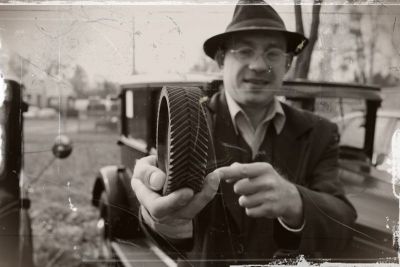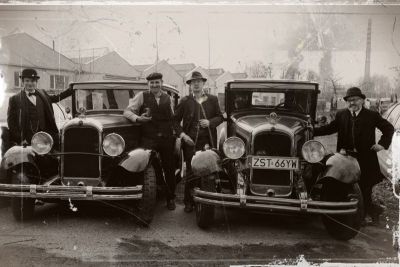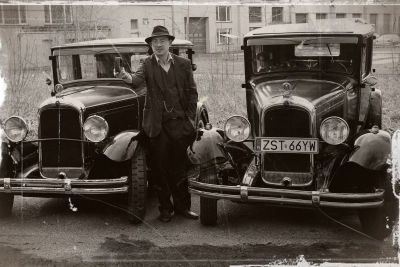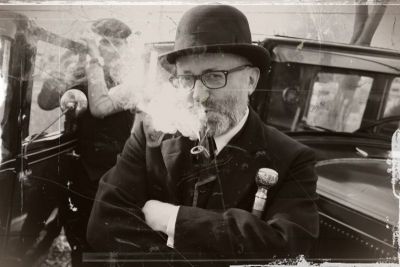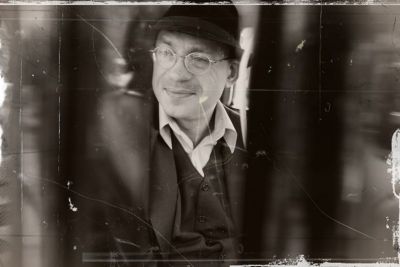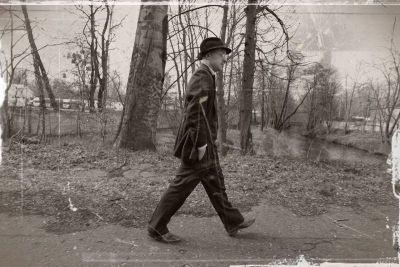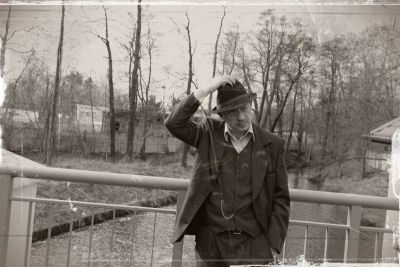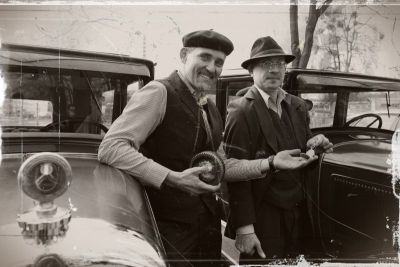Przejście do sekcji:
Links between Głowno and the Citroën brand
CHEVRONS from Głowno
The history of the French concern Citroën began in Głowno, exactly on 18 April 1900, when a young French engineer André Citroën arrived in Osiny on the outskirts of Głowno. It was here, on the banks of the River Mroga, that a copper rolling mill under the name of the Osina Copper, Brass and Wire Joint Stock Company was located. This visit proved to be a turning point in his life. In the near future it would be the beginning of the now world-famous car brand. It was here that the company's founder saw for the first time wheels with a toothed sprocket, the patent which he later purchased, started building engines and then cars. Such wheels ran much quieter than traditional sprockets and could also carry much higher loads. In other words, they "distributed forces better" and, despite being made of wood, proved to be more durable than gears with straight teeth. This was a solution often used in water-powered machines. Citroën, as a young engineer, was probably already aware of the potential of the same wheels, but made of steel.
How did the hammer mill, which will go down in the history of the city and of automobiles for many years to come, come about? The first confirmed information about the existence of a hammer mill, that is, a forge where the metals smelted from the ore were treated or processed by means of a hammer moved by a waterwheel, dates from 24 October 1836. It was then that Józef Lubowidzki and his brother Mateusz became owners of the estate and the "newly established smelter plant" in Osiny near Głowno. The document goes on to say that they "erected a Hamernia Factory and a Copper and Zinc Rolling Mill under the name of Józefów". In 1860 Edmund Stempkowski, a resident of the Huta Józefów estate, became the factory's owner. The copper rolling mill under his management won the bronze medal at the prestigious exhibition held in 1870 in St. Petersburg. The year 1882 proved to be a breakthrough, as the factory was passed into the hands of the Warsaw Prywes family, who modernised and expanded it. The Prywes a.k.a. Ajzenman family ran a business in Warsaw specialising in tools and nails. Three years later, at the Agricultural and Industrial Exhibition in Warsaw, the factory was awarded a silver medal for producing very thin copper sheet. In 1899, the Prywes transformed the factory. The Osińska Towarzystwo Akcyjne Walcownia Miedzi, Mosiądzu i Wireu (Joint Stock Company of the Osiński Copper, Brass and Wire Rolling Mill) was founded, which André Citroën visited with his brother-in-law just one year later. The company's head office was located at 10 Grzybowski Square in Warsaw in a tenement house of which Prywes was a co-owner.
How did it happen that the young French engineer ended up in Głowno? It was no accident. The plant was one of the leading in its field in the Kingdom of Poland, employing 125 people. Above all, however, it was thanks to Bronisław Goldfeder - brother-in-law of André Citroën, a co-owner of a bank in Warsaw, who did business with the Prywes family. Both families lived in Warsaw in a tenement house at 3 Graniczna Street. At the time, the Goldfeders' bank exchange office was being established in Łódź at 77 Piotrkowska Street (today the place is probably best known as "Siódemki"). It is also interesting to note that soon after Andre Citroen's visit, the factory underwent a significant and very rapid development (it was closed for half a year due to the replacement of a water wheel with a turbine). In 1904, it employed 150 people, and just five years later there were as many as 200. The degree of mechanisation and production efficiency had also increased. The site where the plant was located was formally annexed to Głowno by a decree of the Ministry of the Interior on 6 July 1934.
One might also be tempted to ask why it was the engine in which Citroën applied the patent for the toothed wheels he saw in Głowno. The end of the 19th century and the beginning of the 20th century marked the birth and development of the automobiles. The era of the automobiles had arrived. In these, the most important thing was the engine - the "heart" of the vehicle, which was constantly being modernised. At the same time when Citroën was in Głowno, Rudolf Diesel presented an engine of his design powered by peanut oil at the Paris World Exhibition. Shortly after returning to France, Citroën opened a small mechanical workshop, the Citroën Gear Company (Société des engrenages Citroën). Later, when he had already started making cars, he decided to include the symbol of the sprocket wheel in the Citroën logo to commemorate the visit to the factory in Głowno that had changed his life so dramatically. The popular zigzag, also known as the chevron, is still the brand's symbol today.
Jacek Perzyński
On the 121st anniversary of André Citroën's visit to Głowno (18 April 2021), members of the association Amicale Citroën Pologne organised staging of this event in our city. Punctually at 03:00 in the morning, a column of Citroëns, headed by a vintage 1931 C4 model, set off from Citroën Street in Szczecin towards Głowno. They arrived in our town at about 3.30 p.m. Near the former Norblin factory, they recorded a short account of André Citroën's visit to Głowno (the designer was played by an actor Zachariasz Muszyński) and listened to a lecture on the relations between Citroën and Głowno given by Jacek Perzyński, a researcher on the history of the region. It was their tribute to the great designer of French cars and an emphasis on his links with Poland and, above all, with our city. In September 2022, Głowno City Council, to commemorate the visit of this great industrialist to our city, passed a resolution to name one of the squares in the vicinity of the former Norblin factory the 'André Citroën Square'.


